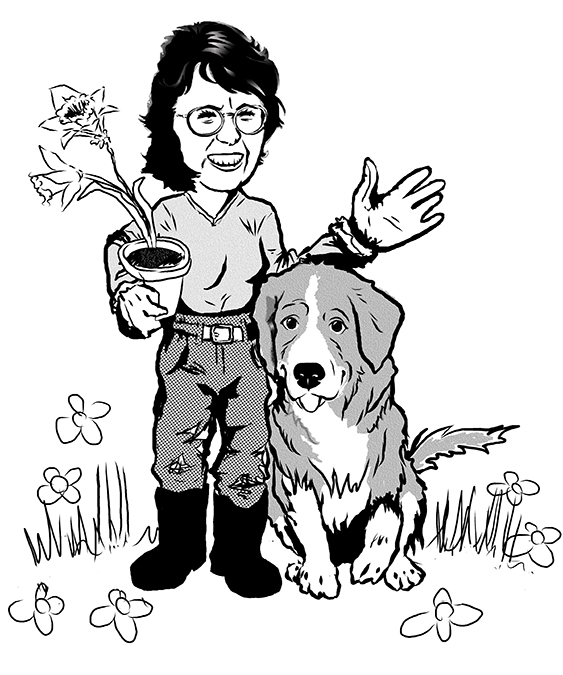by Leslie Cox; updated Saturday, September 8, 2012
Many visitors to our garden ask about the tall, handsome plant in the bottom border bed. Tipping its grand 6 – 7’ (1.8 – 2.1 m) height ever so slightly towards the path to greet guests as they pass by, it certainly belies its common name of Joe Pye weed. We much prefer to introduce this wonderful plant by its proper name of Eupatorium purpureum subsp. maculatum ‘Atropurpurea’. 
Once the height of this plant has caught your attention, the eye is drawn to the long, medium green leaves with toothed edges, each accentuated by a purple central vein down the 9 – 10” (24 – 25 cm) length. Purple leaf stems attach the leaves in groups of six in whorls all the way up the smooth reddish-purple, bamboo-like stem. As rich looking as mahogany, the stems are really and truly stunning.
But wait…there is more. Come late summer, the whole plant is fabulously crowned with panicles of rose-purple flowers, enticing any late butterflies to tarry a little longer in the garden.
We have not found it necessary to stake this tall eupatorium even though it is directly in the path of the prevailing southeast winds. However, we do provide regular water because of the desiccating affect of the wind…even though some references claim they need little water.
Eupatorium is a very old plant dating back to the days of the ancient Romans when it was used as an antidote for poison, among other things. Once containing over 1,000 species in the genus, most have now been reclassified, leaving about 40 in the Eupatorium family. Some are native to various regions in Africa, Asia and Europe. Others are native to North and South America where they were also used as an antidote for poison.
We have another Joe Pye weed variety in the garden, properly named Eupatorium maculatum. This one is about 5 – 5.5’ (1.5 – 1.7 m) tall with hairy green stems speckled gently with purple. Its lanceolate leaves also have toothed edges and are in whorls of groups of six, but slightly shorter with green stems and a green central vein. The rose-purple flowers are flatter across the top but just as alluring to the butterflies.
A third Joe Pye variety has captured our hearts which perhaps explains why there is more than one of this type dotting our landscape in both front and back gardens. It is called Eupatorium rugosum ‘Chocolate’. Delicious, dark chocolate-bronze, heart-shaped foliage is the signature feature of this particular species.
Reaching only 3.5 – 4’ (1.1 – 1.2 m) tall, ‘Chocolate’, like many of the other eupatorium species, tolerates either full sun or partial shade and is hardy to Zone 4. Its white flowers are not quite as showy as the other two varieties in our garden, but are long-lasting from late summer on into mid fall. (I should mention here that ‘Chocolate’ does appreciate regular watering and if it gets more shade than sun it will reduce the number of blooms.)
It is easy to see why Eupatorium rugosum ‘Chocolate’ was selected as a Great Plant Pick at the Pacific Northwest Flower & Garden Show in 2004. Planted with the ornamental grass, Carex elata ‘Aurea’, Tovara virginiana, Adiantum pedatum (five-fingered maidenhair fern) and an Athryium niponicum ‘Pictum’, (Japanese painted fern), the whole effect sets off my fountain to perfection. And the fountain provides just the right amount of splash to keep all the plants in the grouping happy. Another ‘Chocolate’ in our garden looks equally lovely with Hosta ‘Royal Standard’, Geranium sanguineum ‘Max Frei’ and Fuchsia ‘Genii’.
With few pests, (slugs early in the season can be a nuisance), and easy care, these plants are wonderful additions in any border presentation. Their regal stature and allure for butterflies make them a “must-have” plant.
